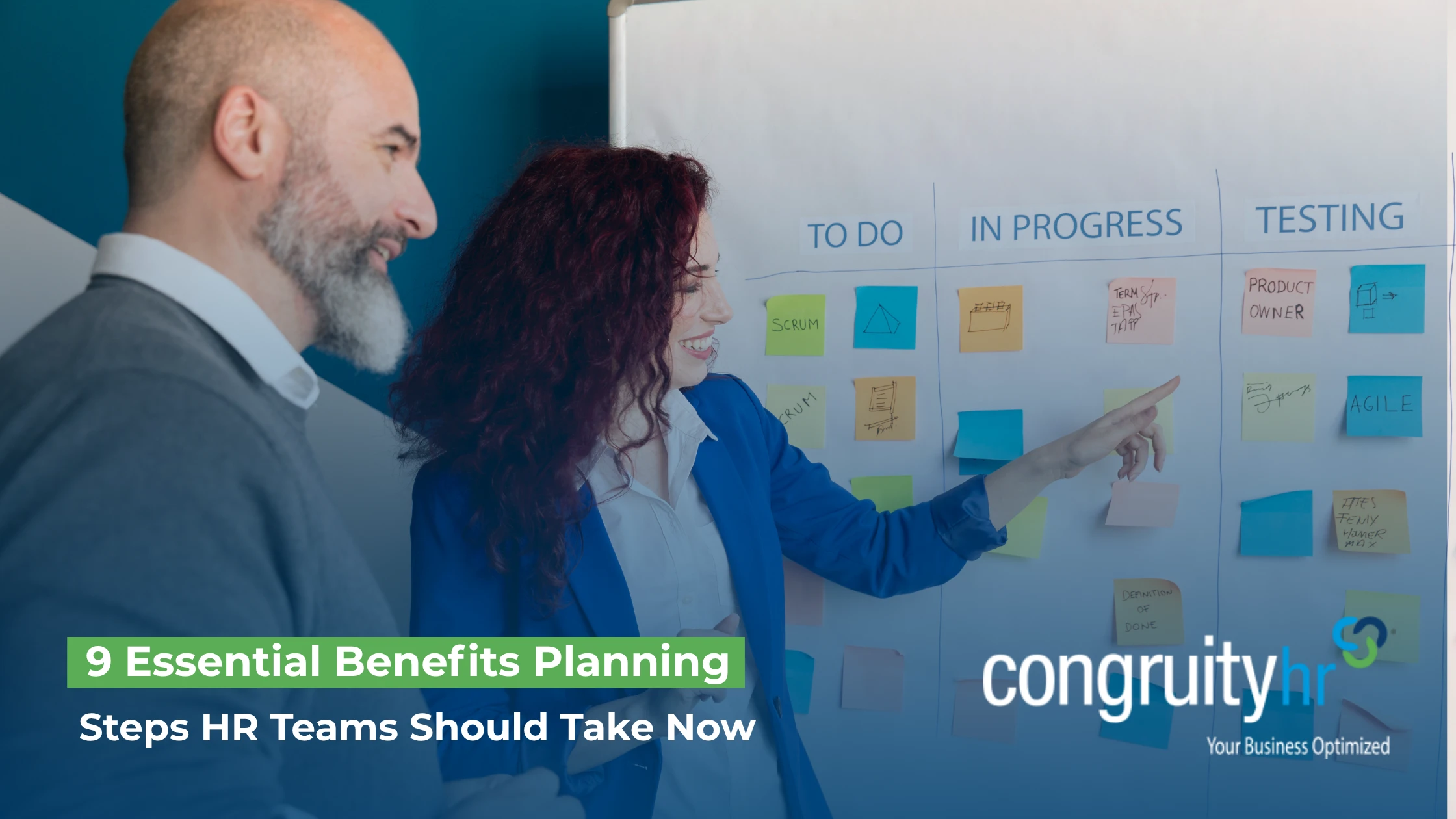Top HR Outsourcing Company Congruity:
Overview:
Open enrollment doesn’t have to feel overwhelming. Yet, for many HR teams, it’s a time of tight deadlines, system hiccups, and employees asking, “What’s an HSA again?”
Whether you’re managing benefits for 20 or 2,000 employees, early preparation is your best friend. In this guide, we’ll break down the nine most important steps you can take now to make open enrollment smooth, strategic, and stress-free.

Open enrollment is the annual window when employees can enroll in or change their employer-sponsored health benefits. For most U.S. organizations, this period falls between November and January, aligning with ACA marketplace timelines.
During this time, employees can:
If they miss this window, they generally have to wait for the next one unless they qualify for a Special Enrollment Period due to life events like marriage or a new child.
Before you finalize offerings, get up to speed on what’s new this year.
Some key 2025 changes to watch:
If you operate in multiple states, check for any state-specific health plan mandates that may affect your compliance requirements.
Don’t wait for your broker or carrier to notify you, reach out proactively or consult with a benefits advisor.
You don’t have to guess what employees want. Data from last year can point you in the right direction.
Start by asking:
In fact, a 2023 Voya survey found that 70% of employees spent less than 30 minutes reviewing their benefits. That’s your opportunity to make offerings more accessible and better tailored.
Open enrollment isn’t just HR’s job.
Bring in:
This cross-functional alignment ensures you won’t hit last-minute roadblocks. Plus, involving department heads early helps you surface unique employee needs you might otherwise miss.
If there’s one place you can truly elevate the employee experience, it’s communication. Unfortunately, 80–85% of employees don’t fully understand their benefits, according to the International Foundation of Employee Benefit Plans.
Here’s how to fix that:
Engagement Ideas:
Even the best-planned benefits offering can fall flat if the platform fails.
Checklist for HR tech readiness:
Before launch, run a mock enrollment with test accounts. It’s a great way to spot system glitches early and refine the user experience.
HR isn’t the only team fielding questions. Managers are often the first stop when employees get confused.
Make sure:
The more confident your internal teams are, the smoother the process will go for your entire organization.
Treat open enrollment like a project with phases, checkpoints, and responsibilities.
Here’s a basic sample timeline:
| Task | Recommended Deadline |
|---|---|
| Vendor/Carrier Meeting | August–September |
| Finalize Offerings | Early October |
| Launch Communications | Mid-October |
| Employee Enrollment | November |
| Final Audit & System Close | Early December |
If you’re juggling compliance, plan design, and employee education, it might be time to bring in help.
A partner like CongruityHR can:
1. What if employees don’t make a benefits selection?
Most employees will be auto-enrolled in the same plan as the previous year, but this varies by employer. Be clear in your communication.
2. How long does open enrollment usually last?
Most employers keep enrollment open for 2 to 4 weeks, typically between October and November.
3. What documents should employees review beforehand?
4. How can we help employees understand HSAs vs. FSAs?
Create a visual comparison chart or use short videos to explain key differences in savings, rollover rules, and tax advantages.
Open enrollment is more than just a once-a-year deadline; it’s an opportunity to reinforce your company’s commitment to employee well-being.
By planning early, aligning your teams, and delivering a thoughtful communication experience, you can turn enrollment season into a success story instead of a stress test.
Need help preparing your team? Reach out to CongruityHR and discover how our benefits planning experts can make open enrollment easier, smarter, and more impactful.